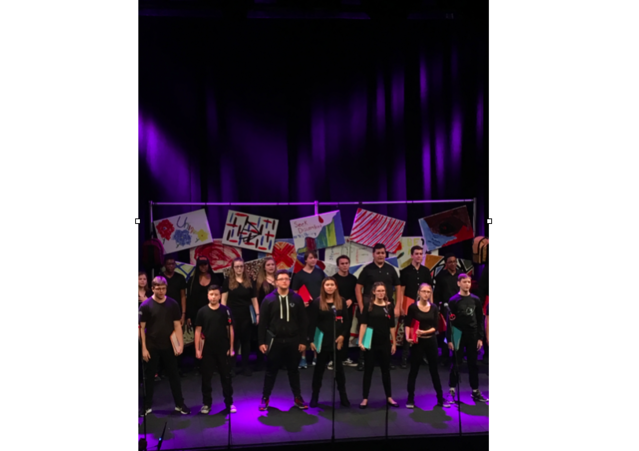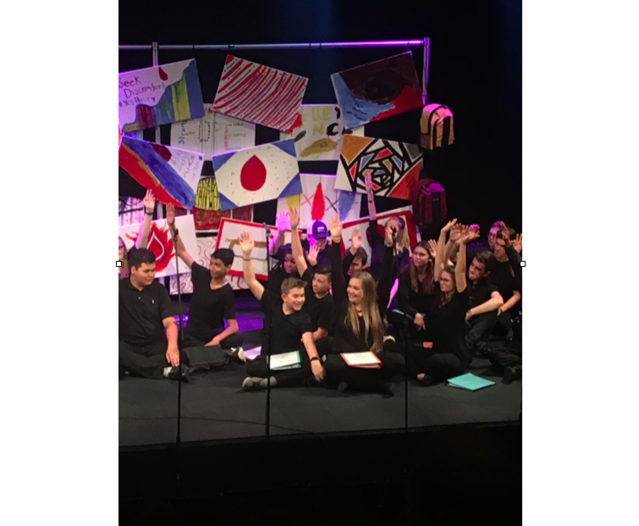
Loneliness
The Loneliness of Orphan Diseases
Finding connection in the rare disease community
Posted March 14, 2019
Every day, someone in the U.S. is born with or wakes up to unexplained symptoms and the subsequent diagnosis of a serious illness. If it’s a disease one has heard of, like diabetes, heart failure or cancer, it’s challenging enough. But if it’s a disease that’s unfamiliar and unknown to the patient or their family and friends, it can be even more difficult. Last January, Kelly Conley in Colorado began experiencing the onset of what was ultimately diagnosed as Cogan’s Syndrome, an autoimmune disorder that impacts her vision and balance. But as Kelly began researching her new reality, she found that Cogan’s Syndrome was something few people had, and as such was poorly understood by the medical community—an “orphan disease.”
The Food and Drug Administration (FDA) defines an orphan disease as “a condition that affects fewer than 200,000 people nationwide,” including diseases like cystic fibrosis and Tourette’s syndrome. Because of their rarity, these diseases are often misunderstood by the public and neglected by major pharma companies. The result for adults like Kelly Conley is both intense loneliness and social isolation; for kids and teens, already at a vulnerable age in their lives, learning to manage their rare disease with its isolating tendencies can be particularly difficult.
For those with an orphan disease, the frustrations and complications can seem endless. The first hurdle: simply being correctly diagnosed. Getting an accurate diagnosis can often take years, according to statistics from the FDA. Because few doctors understand diseases with such low incidence in the population, symptoms of orphan diseases are often dismissed, misunderstood, or confused for those of more common diseases. It can often take a lot of time, energy, and funds to receive a diagnosis, let alone secure the necessary treatment. Instances of co-morbidities arise, too, due to increased risk of physical and behavioral health challenges that may accompany the disease itself.
Once diagnosed, patients often struggle to not only find the appropriate specialists but to connect with peers managing the same health struggles. The isolation restricts them from others managing the same symptoms and diagnosis; the feelings of loneliness that accompany their diagnosis is in a sense a “co-morbidity,” an additional condition that can put them at increased risk for both mental and physical challenges. Lack of engagement with self-care and personal health management – including adherence to medications and medical protocols – can arise as a result of the loneliness and frustrations – worsening outcomes and shortening lives.
These frustrations further magnify when dealing with pediatric medicine and specialists, as children are already tackling the “normal” challenges of childhood and young adulthood. Teenagers, for instance, must deal with hormone shifts, emotional growth and their first encounters with many of the challenges they’ll face again later in life, including finding and keeping close friends. Add to that doctor’s visits, chronic symptoms, and isolation, and you’ll find a young person at risk for buckling under the weight of their disease and at growing risk for further mental and physical health challenges.
So, what can patients and their families do to get diagnosed, address their disease and attempt to quell the accompanying sense of loneliness? In the last few years, a variety of stakeholders dedicated to improving orphan disease treatments and outcomes—from advocacy groups to medical professionals to pharmaceutical manufacturers—have seen the gap in resources and are starting to fill that gap with a growing variety of educational outreach, sponsored activities and online resources to help build communities for families and patients.
Last November, in partnership with pharmaceutical company BioMarin and Believe Limited, director Patrick James Lynch debuted “Hemophilia: The Musical,” as a one-time show involving 25 high-schoolers, all living with blood disorders. Lynch, who himself lives with hemophilia, wanted to engage and connect students from across the U.S. who might be struggling under the weight of managing an orphan disease as teenagers. The students’ personal essays were used as the basis for the musical’s script and lyrics. Students from 19 states across the country, along with a parent or chaperone, came to perform at the New World Stages complex on West 50th Street in Manhattan.

Teens who may have been isolated in their hometowns got to perform with their peers, to share their own stories, and increase their sense of connection to the “bleeding disorders” community. Our UnLonely Project was delighted to participate in that event, presenting some of the science that underpins the health risks of loneliness and also developing an evaluation that confirmed the substantial benefit of that arts-based intervention. Our initial impact survey conducted directly following the show, found that 100 percent of both cast members and caregivers reported “improved confidence and motivation in managing all aspects of their bleeding disorder.” And 92 percent of the students also said they felt less isolated, less stressed and more connected with their peers.

Other “orphan drug” companies have begun to develop programs to help their patients and garner the help of researchers outside the pharmaceutical industry—like Sanofi Genzyme’s innovation challenge meant to drive the invention of new technologies and spark new ideas and research around orphan diseases. At Pfizer, an online content center features videos, articles, and links to clinical trials for patients to explore. As part of Pfizer Rare Disease, the company collaborates with advocacy associations like Council for Change to grow knowledge, explore new therapies and contribute to a collective body of expertise on a pipeline of rare disease projects.
Their investments are also financial. Pfizer offers independent grants for healthcare quality improvement initiatives and sponsors the Rare Disease Consortium (RDC) to encourage drug discovery collaborations with the academic community. After acquiring Bioverativ in 2018, France’s largest drugmaker Sanofi, redeveloped its roadmap to focus on new, innovative therapies for rare blood disorders, to increase treatment options for patients. These companies are investing in relationships with advocacy groups and rare disease communities to help raise awareness, offer much-needed support and build trust.
Alongside research into orphan disease treatments and cures, a patient’s experience is something that must also be addressed. Because of the rarity of these diseases, the children and others who have them can often feel dismissed or distanced from those they interact with regularly, including friends and neighbors but also educators, employers and the healthcare system at large. Advocacy groups, supported by a growing number of care practitioners and other stakeholders concerned about the toxicity of loneliness, are establishing innovative outreach programs and self-care support models, and working diligently to connect patients and their caregivers to others, from the process of seeking diagnosis in the case of the Undiagnosed Diseases Network to connecting patients to researchers like those in the BioTrust enterprise at the Genetic Alliance. The UnLonely Project also works to encourage advocacy and help patients, to reduce the risk of the health burdens that are linked to loneliness as they journey across the continuum of care. And since rare diseases aren’t themselves rare, with over 1,230 currently listed in the National Organization for Rare Disorders (NORD)’s database, perhaps there is an even larger community of those with any rare disease that can be established?
With billions of dollars funneling through the healthcare system to develop and provide access to important new drugs that help patients manage these rare diseases, it is encouraging to note that an increasing number of stakeholders are embracing the responsibility and opportunity to help patient communities that have been ignored and marginalized. Their united efforts can provide the means and mechanisms to foster authentic connection for those whose lives are intertwined with orphan diseases, engaging them in ways that address their loneliness and isolation—and a growing body of medical research demonstrates that when better connected, patients, parents, and other caregivers are all healthier as a result.
Eli Harvey contributed to the research and writing of this blog.



